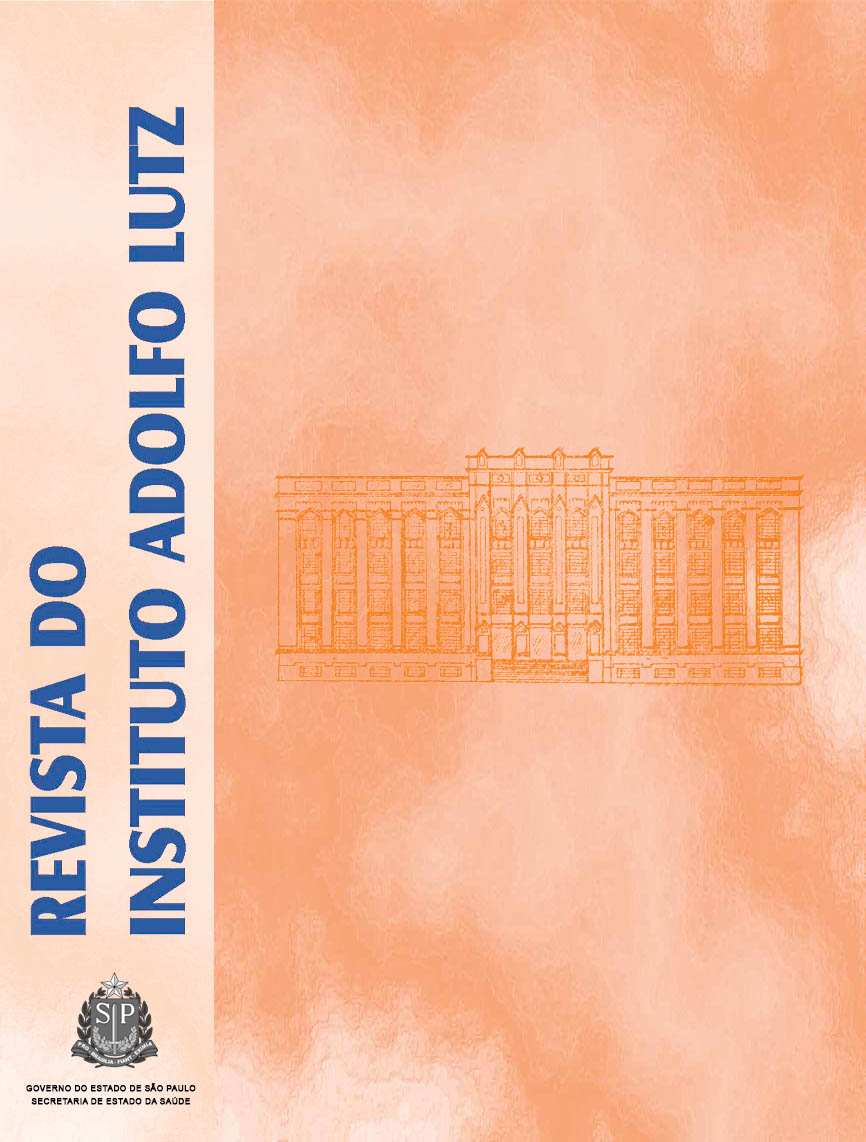Abstract
Anchoita (Engraulis anchoita) was used to prepare a fermented product with sensorial quality and food safety. A mixture (fish, NaCl, glucose) was employed to evaluate the factors which help to speed up the lactic fermentation, pH decrease and lactic bacteria multiplication, and reducing the deteriorant microorganisms. At first, the viable aerobic bacteria counts were 7.1 Log CFU g-1; thereafter an increase in counting was observed until the 7th day of fermentation which gradually decreased to 6.2 Log CFU g-1until the end of the process (28th day) when 1.5% NaCl and 6.0% glucose were added. The lactic acid bacteria predominated over the deteriorant microorganisms during the whole fermentation period at one logarithmic cycle. The glucose was quickly fermented, although the pH decreased (3.9) slowly for the fish supplemented with 6% glucose and 1.5% NaCl. The total titratable acidity (% lactic acid) after 28 days of fermentation came to 3.7% and 3.4%, when 6.0% and 4% of glucose were added. The inoculation of Lactobacillus plantarum maintained the microbiological quality of the product; the deteriorant bacteria decreased significantly.
References
1. Anihouvi VB, Sakyi-Dawson E, Ayernor GS, Hounhouigan JD. Microbiological changes in naturally fermented cassava fish (Pseudotolithus sp.) for lanhouin production. Int J Food Microbiol. 2007;116:287–91.
2. Schulz D, Bonelli RR, Batista CRV. Bacteriocinas e enzimas produzidas por Bacillus spp. para conservação e processamento de alimentos. Alim Nutr. 2005;16(4):403-11.
3. Muriana PM. Bacteriocins for control of Listeria spp. in food. J. Food Prot. Supplement. 1996;Suppl:54-63.
4. Cleveland J, Montville TJ, Nes IF, Chikin das ML. Bacteriocins: safe, natural antimicrobials for food preservation. Int J Food Microbiol. 2001;71:1-20.
5. Bromberg R, Moreno I, Delboni RR, Cintra HC. Características da bacteriocina produzida por Lactococcus lactis ssp. hordniae CTC 484 e seu efeito sobre Listeria monocytogenes em carne bovina. Ciênc Tecnol Aliment. 2006;26(1):135-44.
6. Yongjin H, Wenshui X, Xiaoyong L. Changes in biogenic amines in fermented silver carp sausages inoculated with mixed starter cultures. Food Chem. 2007; 104: 188–95.
7. Riebroy S, Benjakul S, Visessanguan W. Properties and acceptability of Som-fug, a Thai fermented fish mince, inoculated with lactic acid bacteria starters. LWT. 2008; 41: 569–80.
8. Mah JH, Hwang HJ. Inhibition of biogenic amine formation in a salted and fermented anchovy by Staphylococcus xylosus as a protective culture. Food Contr. 2009; 20:796–801.
9. Yeannes MI, Casales MR. Modifications in the chemical compounds and sensorial attributes of Engraulis anchoita fillet during marinating process. Ciênc Tecnol Aliment. 2008;28(4): 798-803.
10. Jiang JJ, Zeng QX, Zhu ZW, Zhang LY. Chemical and sensory changes associated Yu-lu fermentation process – A traditional Chinese fish sauce. Food Chem. 2007;104:1629–34.
11. Garcia-Torchelsen L, Treptow RO. Porciúncula BD, Queiroz MI. Caracterização do odor da anchoita (Engraulis anchoita) armazenada em gelo e água do mar. Alim Nutr. 2008; 19(3): 249-57.
12. Haimovici M, Martin AS, Vieira PC. Distribuição e abundância de peixes teleósteos demersais sobre a plataforma continental do sul do Brasil. Rev Bras Biol. 1997; 56(1): 27-50.
13. Castello L, Castello JP. Anchovy stocks (Engraulis anchoita) and larval growth in the SW Atlantic. Fish Res.2003; 59: 409-21.
14. Lima ID, Castello JP. Distribución y abundancia de Engraulis anchoita en la costa sur de Brasil. Frente Marit. 1994;15: 87-100.
15. Pájaro M. Alimentación de la anchoíta argentina (Engraulis anchoita) Hubbs y Marini, 1935) (Pisces: Clupeiformes) durante la época reproductiva. Rev Invest Des Pesq. 2002;15:111–25.
16. De Martinis ECP, Franco BDGM. Inhibition of foodborne by bacteriocin-producing Leuconostoc spand Lactobacillus sake isolated from “lingüiça frescal”. Rev Microbiol. 1997; 28(4):284-87.
17. Feltrin VP. Produção de Lactobacillus plantarum em meio de cultura à base de melaço de cana-de-açúcar. [dissertação de mestrado]. Florianóplis, Santa Catarina: Universidade Federal de Santa Catarina; 1997.
18. American Public Health Association - APHA. Compendium of methods for the microbiological examination of foods. 3ª ed. Washington; 1992.
19. Association of Official Analytical Chemists - AOAC. Official methods of analysis of the Association of Official Analytical Chemistry. 16th. ed. Washington; 1997.
20. Campagno PCB, Martins Fries LL, Terra NN, Santos BA, Furtado AS. Salame elaborado com Lactobacillus plantarum fermentado em meio de cultura de plasma suíno. Ciênc Tecnol Aliment. 2007; 27(4):883-9.
21. González B, Arca P, Mayo B. Detection, purification, and partial characterization of plantaricin C, a bacteriocin produced by a Lactobacillus plantarum strain of dairy origin. Appl Environ Microbiol. 1994; 60:2158-63.
22. Lewus CB, Kaiser A, Montville TJ. Inhibition of food-borne bacterial pathogens by bacteriocins fron lactic acid bacteria isolated from meat. Appl Environ Microbiol. 1991; 57:1683-88.
23. Mazo JZ. Detecção de bacteriocinas produzidas por Lactobacillus plantarum BN me melaço de cana-de-açúcar sob fermentação submersa. [dissertação de mestrado]. Florianópolis, Santa Catarina: Universidade Federal de Santa Catarina; 1999.
24. International Comission on Microbiological Specifications for Foods - ICMSF. Gases as preservatives. In: Food Microbiol Ecology. New York: Academic Press Inc. 1980;1:170-192.
25. Ijong FG, Ohta Y. Physicochemical and microbiological changes associated with bakasang processing - A traditional indonesian fermented fish sauce. J Sci Food Agric. 1996; 71(1): 69-74.
26. Aksu MI, Kaya M. Effect of usage Urtica dioica L. on microbiological properties of sucuk, a Turkish dry-fermented sausage. Food Contr 2004;15(8):591–595.
27. Yin LJ, Pan CL, Jiang ST. Effect of lactic acid bacterial fermentation on the characteristics of minced mackerel. J Food Sci. 2002; 67(2): 786–92.
28. Lee JY, Kim CJ, Kunz B. Identification of lactic acid bacteria isolated from kimchi and studies on their suitability for application as starter culture in the production of fermented sausages. Meat Scien. 2006; 72:437–45.
29. Hu Y, Xia W, Ge C. Characterization of fermented silver carp sausages inoculated with mixed starter culture. LWT. 2008;41: 730–38.
30. Morzel M, Fransen NG, Elke KA. Defined starter cultures used for fermentation of salmon fillets. J Food Sci. 1997; 62(6):1214-18.

This work is licensed under a Creative Commons Attribution 4.0 International License.
Copyright (c) 2010 Instituto Adolfo Lutz Journal
